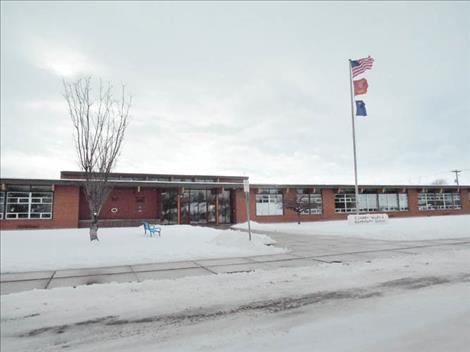Lake County school districts address lead in water
Hey savvy news reader! Thanks for choosing local.
You are now reading
1 of 3 free articles.
LAKE COUNTY — As of the first of the year, all schools accredited by the Montana Board of Public Education were required to have their drinkable water inspected for lead.
Part of a regulation enacted in Jan. 2020 by the Montana Department of Public Health and Human Services (DPHHS) to minimize lead levels in the drinking water provided to children, school districts were required to sample all drinking water fountains, kitchen fixtures, and all other “potential human consumption” fixtures for lead levels by Dec. 31.
Paid for by the State of Montana, the samplings taken at each school are looking for an action level of 5.0 ug/L (a measure of density), or 5 parts per billion (ppb). While the EPA and Center for Disease Control agree there is no known safe level of lead in a child’s blood, children ages six and under are particularly susceptible to the effects of lead. According to the State of Montana website 5.0 ug/L was selected because it is the practical quantitation level (PQL) for lead. This means that it is the lowest concentration at which lead can accurately be measured in water.
The Montana Department of Environmental quality developed a web application, EQuIS Collect, that allows schools to upload the required information, with a dashboard to allow schools and the public to view the results and associated actions.
Schools in Lake County had several faucets with beyond acceptable lead levels. Administrators said they acted quickly. Some had both tested and remedied the faucets in question before the deadline for their initial findings.
The Ronan school district hired a company out of Kalispell to test the faucets in all their buildings in September 2021, explained Superintendent Mark Johnston. The test involved flushing out the water systems the night before, then having the company test every faucet the next day.
“There were quite a few of the drinking faucets that needed a filter,” Johnston said.
Initial test results on EQuIS show the Ronan school district had 81 faucets with above-acceptable lead out of the 396 sources tested in all four schools:
- K William Harvey Elementary had 24 unacceptable out of 105, with a range of 5 to 13 ppb in 19 sinks and 5 to 6 ppb in four drinking fountains with one outlier at 72 ppb.
- Ronan Middle School had 5 unacceptable out of 123, with a range of 5 ppb to 35 ppb entirely in sinks.
- Ronan High School had 11 unacceptable out of 102, with a range of 5 to 43 ppb entirely in sinks with one outlier at 557 ppb.
Pablo Elementary had the most, with 38 out of 66 faucets reading unacceptable with a range of 5 to 19 ppb in 22 sinks and 8 to 49 ppb in 16 drinking fountains.
In response to the results, the school district installed Pur water filters on all impacted faucets in Pablo Elementary. Johnston stated a retest has been conducted and that the filters did their job, rectifying the issue. They are now in the process of adding those same filters to all other schools in the district.
“We’re in good shape. I think we’re ahead of a lot of school districts,” Johnston said.
While school districts acted efficiently to eliminate lead, some found themselves without much to fix.
“We passed with flying colors,” Steve Love, Superintendent of Charlo, said. “We’ve had good luck so far.”
Also undergoing the initial testing in the fall, only two faucets out of 66 in Charlo’s K-12 school returned with higher than acceptable levels: a drinking fountain that measured at 52 ppb, and a sink that measured at 9 ppb. One was already unused and promptly shut down, and the other was remedied with replaced components.
The Polson school district had 93 faucets with above-acceptable lead levels out of all 295 tested faucets tested in all schools.
Cherry Valley School had 19 unacceptable out of 39, with a range of 6 to 229 ppb entirely in sinks.
Linderman School had 16 unacceptable out of 65, with a range of 6 to 41 ppb entirely in sinks.
Polson Middle School with 7 unacceptable out of 66, with a range of 5 to 22 ppb entirely in sinks.
Polson High School with 51 unacceptable out of 125, with a range of 5 to 426 in 46 sinks with two outliers at 827 ppb and 1180 ppb, 7 to 346 ppb in 2 drinking fountains, and 27 ppb in one hose bibb.
“Those levels were very high. We were pretty alarmed by the results,” Superintendent Mike Cutler said. “[We’ve] rectified the situation since.”
Dan Giles, head of maintenance for Polson schools, confirms he has already remedied all faucets by installing filters or removing faucets from service.
At time of writing, no data was available for St. Ignatius and Arlee schools.
Parents can check the status of their children’s school sampling on the DEQ Lead Reduction in Schools Drinking Water Program webpage: mtdeq.equisonline.com.
Exposure to lead can cause damage to the brain, red blood cells, and kidneys. If parents are concerned about their children’s exposure to lead, they should contact a health provider to learn more about blood lead testing.

















